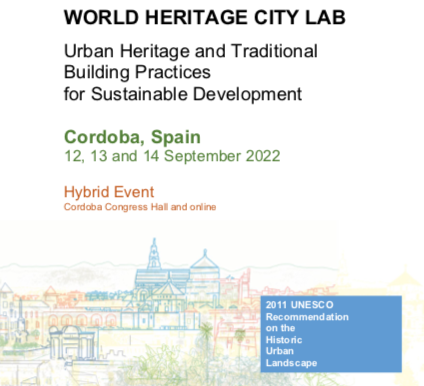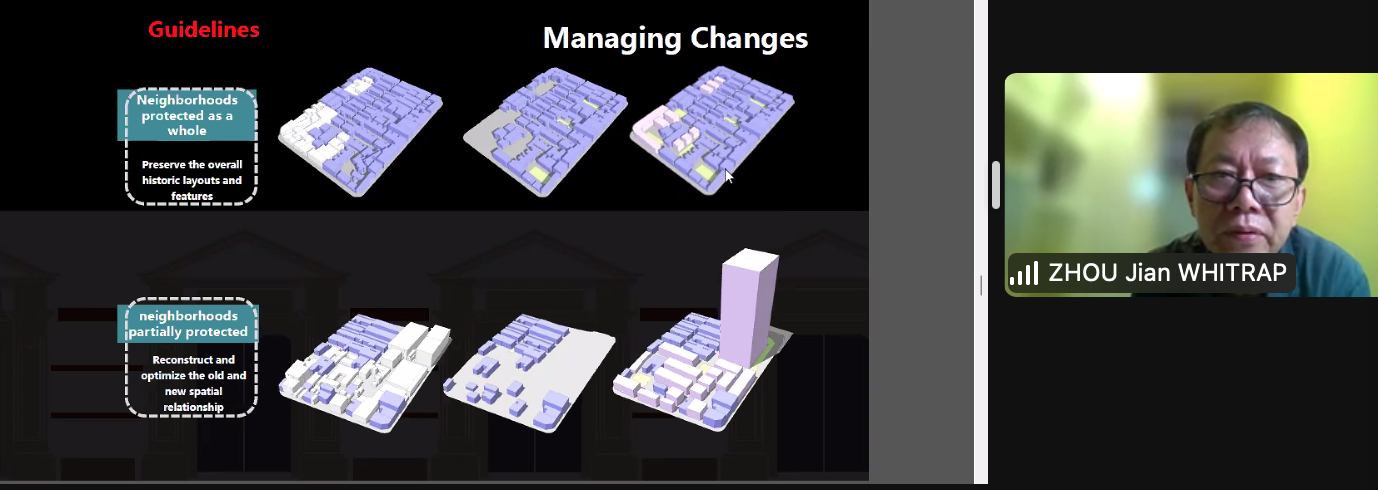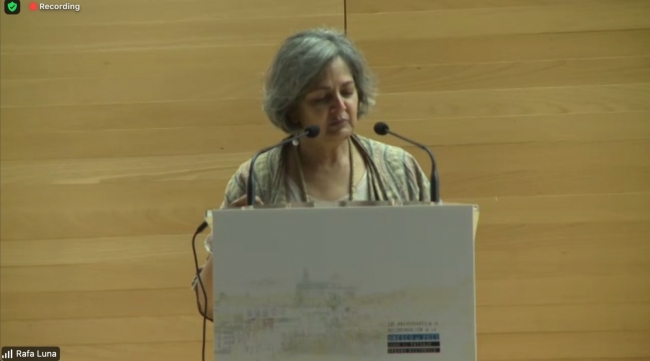| World Heritage City Lab on Urban Heritage and Traditional Building Practices for Sustainable Development |
| Author:Marie-Noël Tournoux PublishDate:2022-09-22 Hits:1056 |
The City of Cordoba, Spain, in cooperation with the World Monuments Fund and the UNESCO World Heritage Centre, held a World Heritage City Lab to discuss Urban Heritage and Traditional Building Practices for Sustainable Development in a hybrid format from 12 to 14 September 2022.  This event brought together, city site managers, or government representatives as well as researchers decision makers from around the world, working in the application of the UNESCO Recommendation on the Historic Urban Landscape approach and sustainable urban development in general. The objective was to further discuss the interconnection between urban heritage and development processes. It addressed in particular Sustainability & Resilience, Governance & Communities, Economy & Tourism, Global & Local to discuss holistic historic city management for resilience and sustainable development.  Prof. Zhou Jian, Secretary General of WHITRAP, Director of WHITRAP Shanghai, and Professor at the College of Architecture and Urban Planning of Tongji University, presented the case of Shanghai’s new Master Plan 2017-2035 and how it integrates heritage valorisation and its impact on a new approach to the megapolis urban development. He explained how the new plan further continued the intense research and identification of heritage values, focused on the historic urban landscape, or designating and protecting heritage, managing change, promoting conservation through reuse of historic buildings and places. To do that he explained the principles, the tools and the practice, such as reinforced legislation, supported by standards, guided by planning, transmitted by implementation and promoted by projects. He underlined the evolution of the understanding of the urban heritage of Shanghai, from single buildings to historical areas, focusing mostly on their uniqueness to considering other periods in time different typologies and different scales, such as whole neighbourhoods (the early 20th century row houses lilong, and workers’ new neighbourhood built in the 1950s), industrial heritage and university campus’, street patterns, urban landscape spatial patterns. He further developed approaches to manage change with a focus on the reutilization of heritage and the new guidelines for private developers varying according to levels of protection of neighbourhoods and state of conservation, varying from neighbourhoods still standing as a whole and where the approach is to protect the historic layout and features; or the cases of neighbourhoods, which are partially still standing, where the approach is to reconstruct and optimize the old whilst developing new spatial relationships. He furthermore insisted on the importance of guidelines and management mechanisms and systems. The City Lab was very dense, which allowed discussants from different regions of the world to take part and some of the key themes addressed and to further consider were: • Economics • Larger scales and the metropolitan area • Regulatory systems and governance systems • Reuse of housing, upgrading of living conditions and gentrification  Jyoti Hosagrahar, Deputy Director of the World Heritage Centre, in her conclusion highlighted the importance of management and planning mechanisms and focusing not only on the planning tools but the systems and decision-making processes. She also highlighted the change of focus from urban design, which does remain important, to general overall strategies.
Contributed:Marie-Noël TOURNOUX(Project Director WHITRAP Shanghai) Typeset:JI Zhenjiang (Intern) |
- News | UNESCO’s “World Heritage and Sustainable Tourism Programme” Phase II China Pilot Studies - Yellow (Bohai) Sea Migratory Bird Habitat Phase I Training Course Successfully Held
- WHITRAP's Side Event Adopted by the 46th Session of WH Committee
- Publication | WHITRAP Newsletter No. 62
- News | HeritAP Chat: 2024 World Heritage Contribution to Sustainable Development Goals Successfully Held
- SEAMEO SPAFA-WHITRAP Training Workshop on Heritage Impact Assessment held in Melaka
- Call for Application | 2024 Global Awards for World Heritage Education Innovative Cases(AWHEIC) Promoting what people do and how they do it
Copyright © 2009-2012 World Heritage Institute of Training and Research-Asia and Pacific (shanghai)


